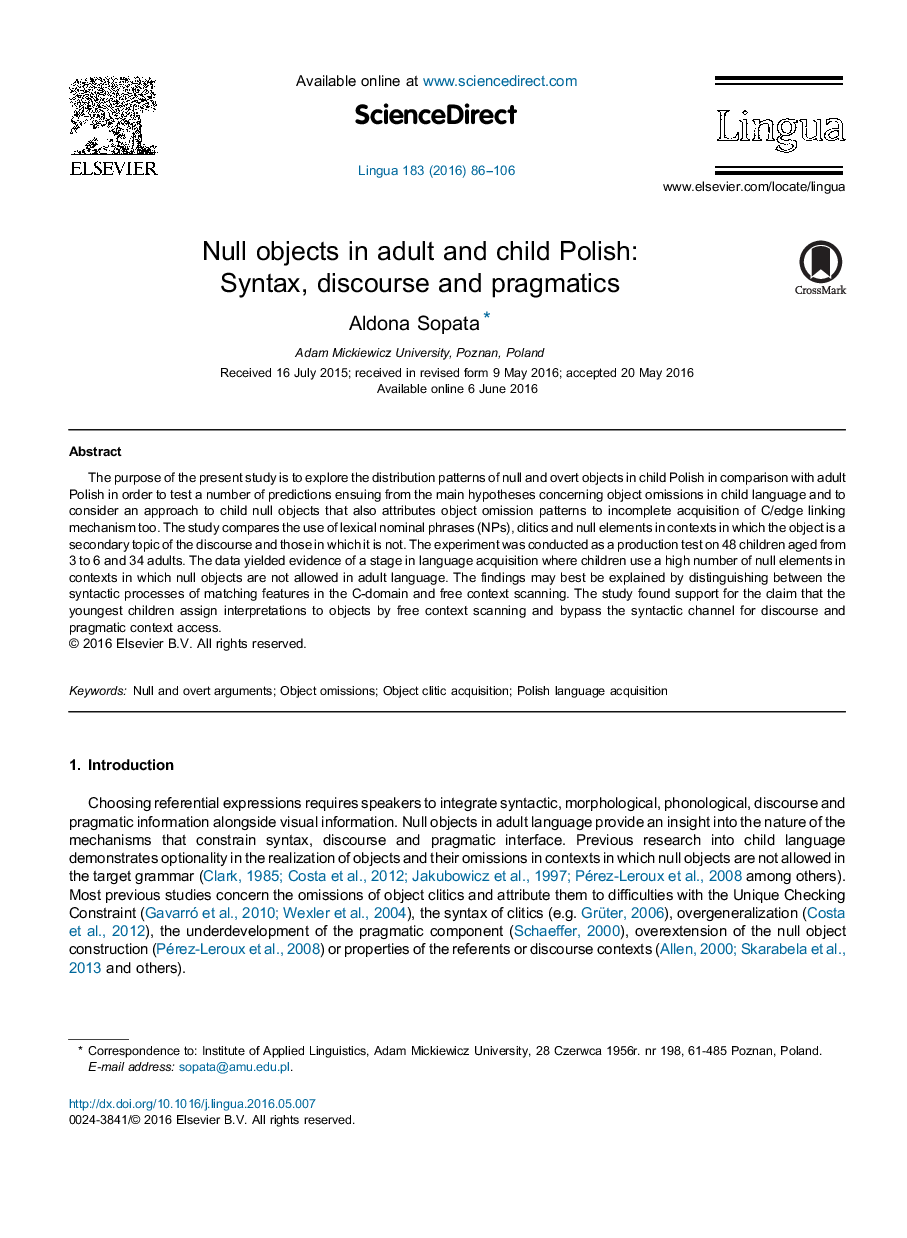| Article ID | Journal | Published Year | Pages | File Type |
|---|---|---|---|---|
| 5043073 | Lingua | 2016 | 21 Pages |
•Polish is a null object language.•Children use null elements in contexts in which they are ruled out in adult language.•Children assign interpretation to the null elements bypassing the syntactic channel.
The purpose of the present study is to explore the distribution patterns of null and overt objects in child Polish in comparison with adult Polish in order to test a number of predictions ensuing from the main hypotheses concerning object omissions in child language and to consider an approach to child null objects that also attributes object omission patterns to incomplete acquisition of C/edge linking mechanism too. The study compares the use of lexical nominal phrases (NPs), clitics and null elements in contexts in which the object is a secondary topic of the discourse and those in which it is not. The experiment was conducted as a production test on 48 children aged from 3 to 6 and 34 adults. The data yielded evidence of a stage in language acquisition where children use a high number of null elements in contexts in which null objects are not allowed in adult language. The findings may best be explained by distinguishing between the syntactic processes of matching features in the C-domain and free context scanning. The study found support for the claim that the youngest children assign interpretations to objects by free context scanning and bypass the syntactic channel for discourse and pragmatic context access.
